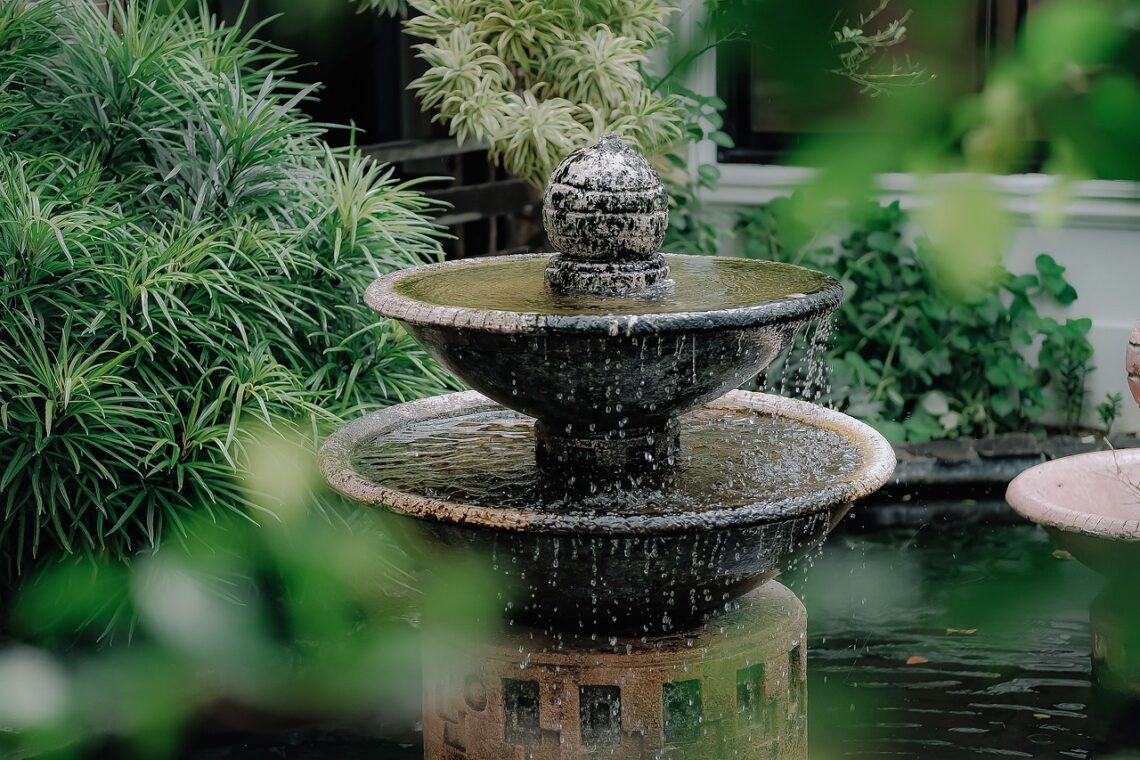Outdoor fountains play a significant role in eco-conscious landscape design. By integrating these fountains, you can promote a sustainable environment while adding beauty to your outdoor spaces. These water features are not just decorative; they offer benefits like cooling the air, supporting local wildlife, and even conserving water if designed thoughtfully.
When selecting the right fountain, consider those that use recycled materials or incorporate native plants. These choices support the local ecosystem and minimize your garden’s water needs. Explore a variety of styles for your garden with the available outdoor fountains by Majestic, which can match your desired aesthetic while keeping sustainability in mind.
Incorporating modern technologies, such as energy-efficient pumps and LED lighting, can also reduce energy use. Advanced systems can even manage water levels and quality, creating an eco-friendly ambiance that improves your landscape. These thoughtful designs illustrate how outdoor fountains can contribute positively to both your garden and the environment.
Incorporating Water Features in Sustainable Landscape Design
Incorporating Pond Haven into your landscape design can enhance sustainability and aesthetics by providing a serene, eco-friendly water feature that supports local wildlife. Integrating water features into sustainable landscapes can transform outdoor spaces with ecological benefits, resource conservation, and aesthetic improvements. These designs blend beauty with function, often using innovative techniques to reduce environmental impact.
Benefits of Outdoor Fountains
Outdoor fountains not only add visual appeal but also create a calming atmosphere with their flowing water sounds. They help draw people to natural spaces, encouraging relaxation and tranquility. Additionally, fountains can reduce noise pollution, making your outdoor area more peaceful.
These water features can also cool the air around them, especially in urban settings. The gentle movement of water can help lower the temperature in nearby areas, providing a more comfortable environment during hot months.
Sustainable Water Use and Conservation
Sustainable garden designs often incorporate fountains that conserve water effectively. Technologies like recirculation systems minimize water waste by reusing the same water. Implementing drought-tolerant plants around fountains can further conserve water, as they need less irrigation.
Using rainwater harvesting techniques allows fountains to operate using natural water sources. This approach reduces dependency on municipal water supplies. Meanwhile, efficient irrigation systems help direct water only where it’s needed, preventing unnecessary evaporation or runoff.
Improving Ecosystems and Biodiversity
Incorporating water features like ponds and fountains supports urban biodiversity by providing habitats for various wildlife. Water features create spaces for birds, insects, and other beneficial animals, promoting a balanced ecosystem.
Natural filtration systems within these features can improve water quality, supporting aquatic life. Integrating native plants around fountains creates a thriving environment for diverse species. Biodiversity is further strengthened by practices like companion planting, which helps create a more resilient landscape against pests and diseases.
Stormwater management benefits from water features, as they can help absorb runoff. This capability reduces the risk of flooding and erosion, making landscapes more sustainable.
Best Practices for Eco-Conscious Fountain Integration
Using sustainable practices in integrating outdoor fountains can boost your landscape’s eco-friendliness. This includes choosing materials that are gentle on the environment and planning maintenance that promotes sustainability. Adequate attention to these aspects helps you create a balanced and natural setting.
Eco-Friendly Materials and Design Choices
Consider using recycled materials like repurposed metals and sustainable wood for your fountain. These materials reduce the need for new resources and minimize waste. Think about using permeable paving materials around the fountain. This helps with stormwater runoff management by allowing water to filter naturally into the ground.
Incorporating native plants and vegetation around the fountain aids in water conservation as they require less water and support local ecosystems. You can also integrate rainwater harvesting systems to supply water for your fountain, which minimizes dependence on other sources. Look for organic alternatives for any chemicals needed to maintain the fountain’s water quality, promoting safer water management.
Maintenance Considerations for Sustainability
Regular maintenance is key. Utilize integrated pest management techniques to address any pest concerns without harming the environment. Consider the health of the soil surrounding your fountain by employing composting and other soil health practices to enrich the garden naturally.
To conserve water, install high-precision valves and pumps that can adjust water flow efficiently. Water conservation techniques like these help maintain the fountain without excessive water use. It might also be beneficial to use sensors that monitor water levels and quality automatically. This way, you can make sure your fountain remains an eco-friendly focal point in your landscape.
Conclusion
Incorporating outdoor fountains into landscape design can help create eco-friendly environments. By using features like programmable LED lighting and advanced pumps, these fountains reduce energy usage and add beauty to the space. They also support local ecosystems by including native plants and recycled materials.
Outdoor fountains can even assist in managing stormwater in urban settings by collecting and storing rainwater. This function supports urban resilience and helps conserve resources. Such features become part of a city’s green infrastructure.
The water features in gardens have changed over time, moving from extravagant displays to simple designs that blend well with the surroundings. This shift reflects a broader trend toward minimalism and eco-consciousness in landscape design.
The calming presence of water in a garden or urban area can boost well-being and reduce stress. These benefits add practical and aesthetic value to any space, making outdoor fountains a smart choice for eco-conscious design.
Read more home and garden articles at ClichéMag.com
Images provided by Deposit Photos, BingAI, Adobe Stock, Unsplash, Pexels, Pixabay & Creative Commons




